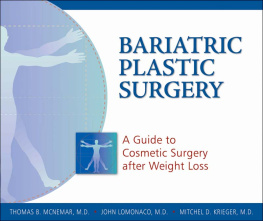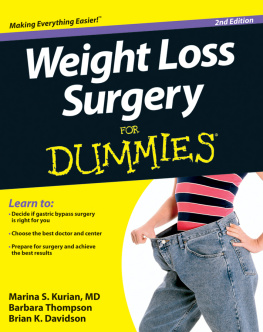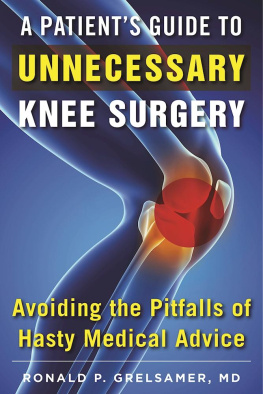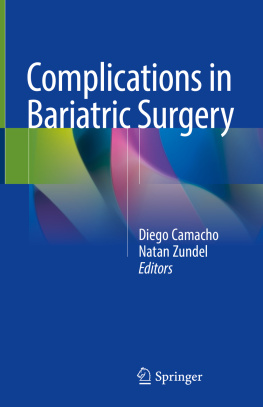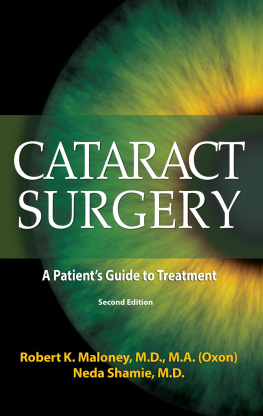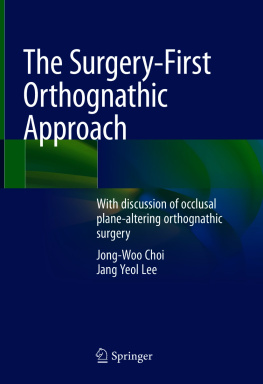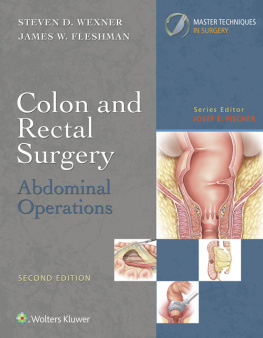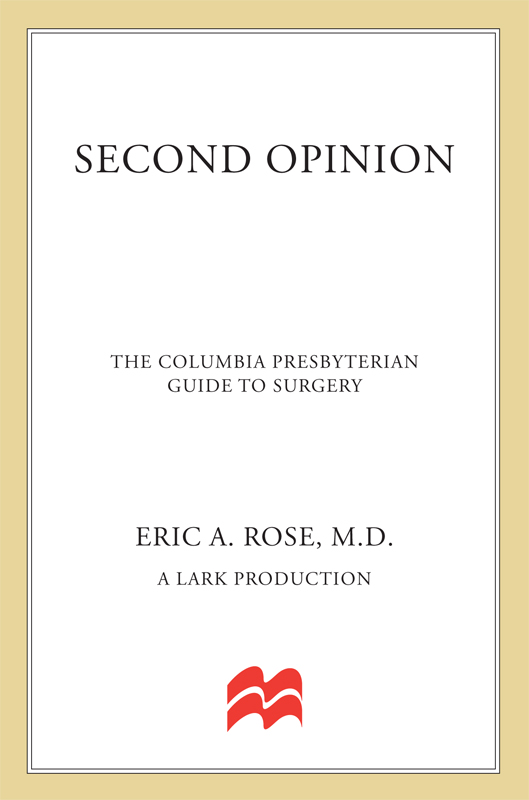Contents
Guide

The author and publisher have provided this e-book to you for your personal use only. You may not make this e-book publicly available in any way. Copyright infringement is against the law. If you believe the copy of this e-book you are reading infringes on the authors copyright, please notify the publisher at: us.macmillanusa.com/piracy.
Contents
Inclusion of resource listings in this book in no respect implies any endorsement or recommendation by Columbia University, New YorkPresbyterian Hospital, or the Publisher of the book. This book is not intended, nor should it be used in any way, to provide diagnoses or to prescribe any specified treatment or medication. For the diagnosis and treatment of medical conditions, readers should in all cases consult their own doctor or other medical provider.
This book, like virtually all surgery, is the product of extensive collaboration. Special thanks to Joanne Kabak for her skill with words. Deborah Schwarz-McGregor, P.A., and Robin Dellabough were the driving forces behind translating a concept into a manuscript. The narrative chapters in Parts One and Two were inspired by the questions of patients and their families, as well as the seemingly endless queries of medical students and residents. It is just these simple issues that shed the most light on what we know, and, equally important, what we need to learn and communicate. The operation-specific chapters in Part Three were primarily the work of Columbia Presbyterian surgeons, whose expertise and diligence in responding to simple questions reflect their remarkable commitment to keeping patients well informed as an integral part of the process of getting well. They are listed in the resource section.
In addition, there were many Columbia Presbyterian staff members and other professionals who provided invaluable information beyond the scope of specific surgical procedures. Their knowledge informs the entire book. They include Suzanne Arcuni, orthopedic surgery; Dr. Ellise Delphin, anesthesiology; Dr. Beth Ann Ditkoff, breast cancer surgery; Dr. Andrew Feit, anesthesiology; Dr. Seth Feltheimer, internal medicine; Michelle Gabay, RN, surgical oncology; Tom Hickey, P.A., cardiothoracic surgery; Dr. Paul LoGerfo, thyroid surgery; Wahida Karmally, MSRD, director of nutrition; Anne B. Lawler, CSW, social worker, heart failure and pre-transplant center; Dr. Mehmet C. Oz, cardiac surgery; Ellen Simon, Ph.D., Director of Social Work; Dr. Joseph Tenenbaum, cardiology; Sandra Walsh, director of patient relations; Diana Walsh, administrator, thyroid; Jery Whitworth, director of Department of Complementary Medicine; Grace Wong, medical insurance.
Eric A. Rose, M.D.
You might assume that I, as chief of surgery at a major medical center, would be in favor of surgery. So why do I think the world needs a book called Second Opinion? The story of two octogenarians I saw in one recent week will help explain.
They both came to me for heart bypass surgery. One was a very sick eighty-three-year-old. This man was taking every medicine available, including many nitroglycerin tablets daily. He was in constant pain. A heart bypass operation held substantial risks for him. So, in light of his advanced age, I asked if his pain was so bad that he was willing to risk a 20 percent chance of dying to be rid of it. His answer was, Hell, no. Ill live with it. I dont want to go through an operation. Id rather live with this pain, understanding that I may even die from it in the next few days.
The same week, an eighty-six-year-old came in. This man swam one hundred laps a day, but he was experiencing angina at the fiftieth lap. He said, Ive had a rich and enjoyable life, and swimming is very important to me. Im willing to take the 20 percent chance of dying to be able to swim without pain. After a successful operation, hes swimming 100 laps a day again.
The first patient chose to live with his pain. The other patient wanted to get rid of it entirely. Both of them made a reasonable choice, but the point is that it was their choicenot the doctors decision.
Most people at some time will have to face whether they or a loved one should have an operation. The consequences of that decision are enormous. Everyone has the potential ability to evaluate and participate in the decision. No matter what your condition, you do have certain choices, in terms of what operation you may need, where youre going to have it, and whether youre going to have it. You need to make those choices using the best knowledge you can obtain so that you get the best outcome: to feel better and live longer.
I wrote this book to provide you with the information you need to make informed decisions concerning surgery. This is truly a self- help book. Although opting for surgery is a way people can help themselves, many people have a remarkable lack of insight into the process. I want this book to empower you to take charge of your own care with the surgeon as your collaborator. You can and should play a key role in the decision-making process.
I tell my patients if theyre uncomfortable with what theyre hearing from me, they ought to get a second opinion. Dont have surgery because you like the way the doctors office looks, or because hes a friend of a friend. Instead, you should be convinced of two things:
1. You understand what your medical problem is.
2. You understand how an operation is going to help you solve the problem.
There are several major themes in the book to help you think about surgery in the most logical way. Part One covers the basic question: Whats wrong?not always as simple as it soundsand addresses how surgery may solve whatever is wrong, along with its benefits and risks. The big question is: What are the problems I am trying to solve? You cant figure out what to do until you really narrow down whats wrong. Is your problem I dont like my eyelid wrinkles or Ive got coronary disease?
You begin to take charge of your health by asking your doctor to explain what it is he or she thinks is your problem. It doesnt have to include the gruesome details, but rather an understandable description in lay terms. For example, a doctor might summarize your condition by saying, You have stones in your gallbladder that are causing inflammation which, in turn, is causing you pain. This is called cholecystitis. Or, Youve torn the ligaments in your knee, which means that your knee is unstable and will hurt if you exert yourself.
The second thing any patient needs to understand is the proposed solution, and its benefits and risks. Part One of this book addresses the general questions you can ask no matter what kind of surgery is involved: Why is this surgery going to help me? How? What are the downsides? Can this surgery hurt me?
The answer to the last question is almost always yes. So the real concern is, how likely is it that the surgery will hurt you? Sometimes there is simply not enough quantitative data to answer all the questions, but you certainly should be able to get a good sense of risk versus benefit.
Risk is intrinsic to all surgery, starting with the ultimate risk of death. You could say that almost any procedure has some death risk. I urge patients to put this particular risk into perspective. Walking across the street has some death risk. In surgery, infection, bleeding, and complications of anesthesia are the most common risks.
Taking these risks into consideration, you next need to find out exactly what benefits the surgery would provide. For example:


